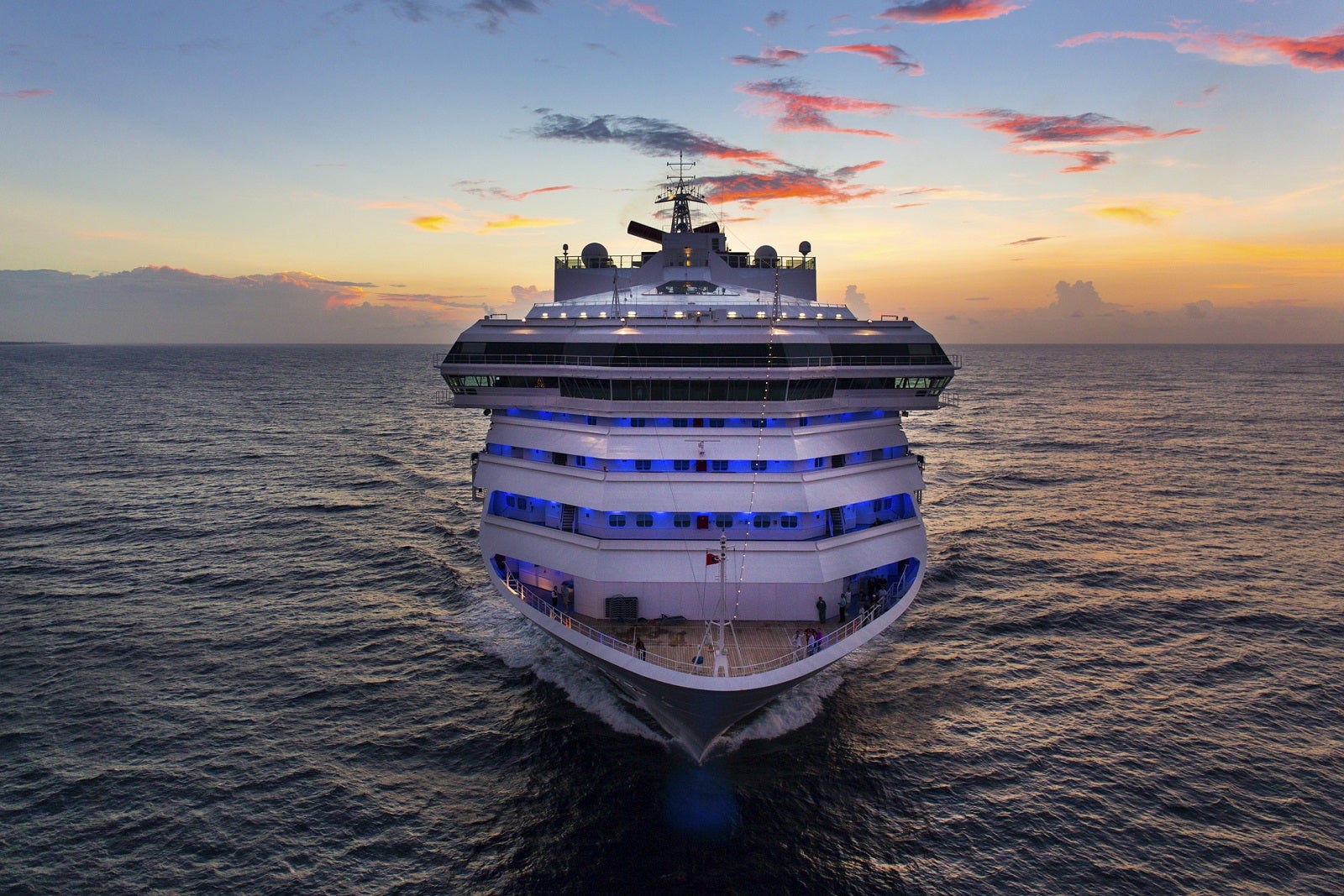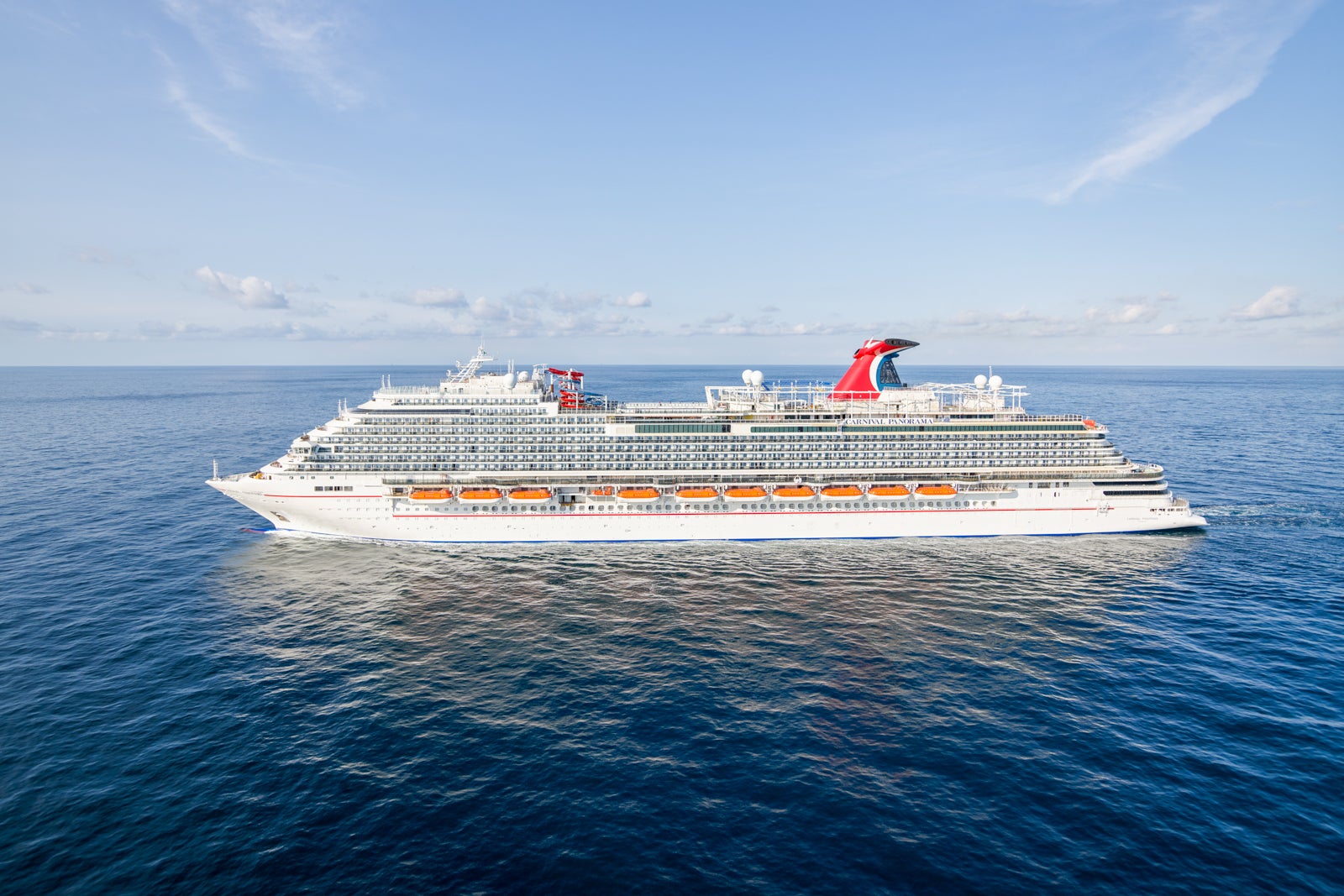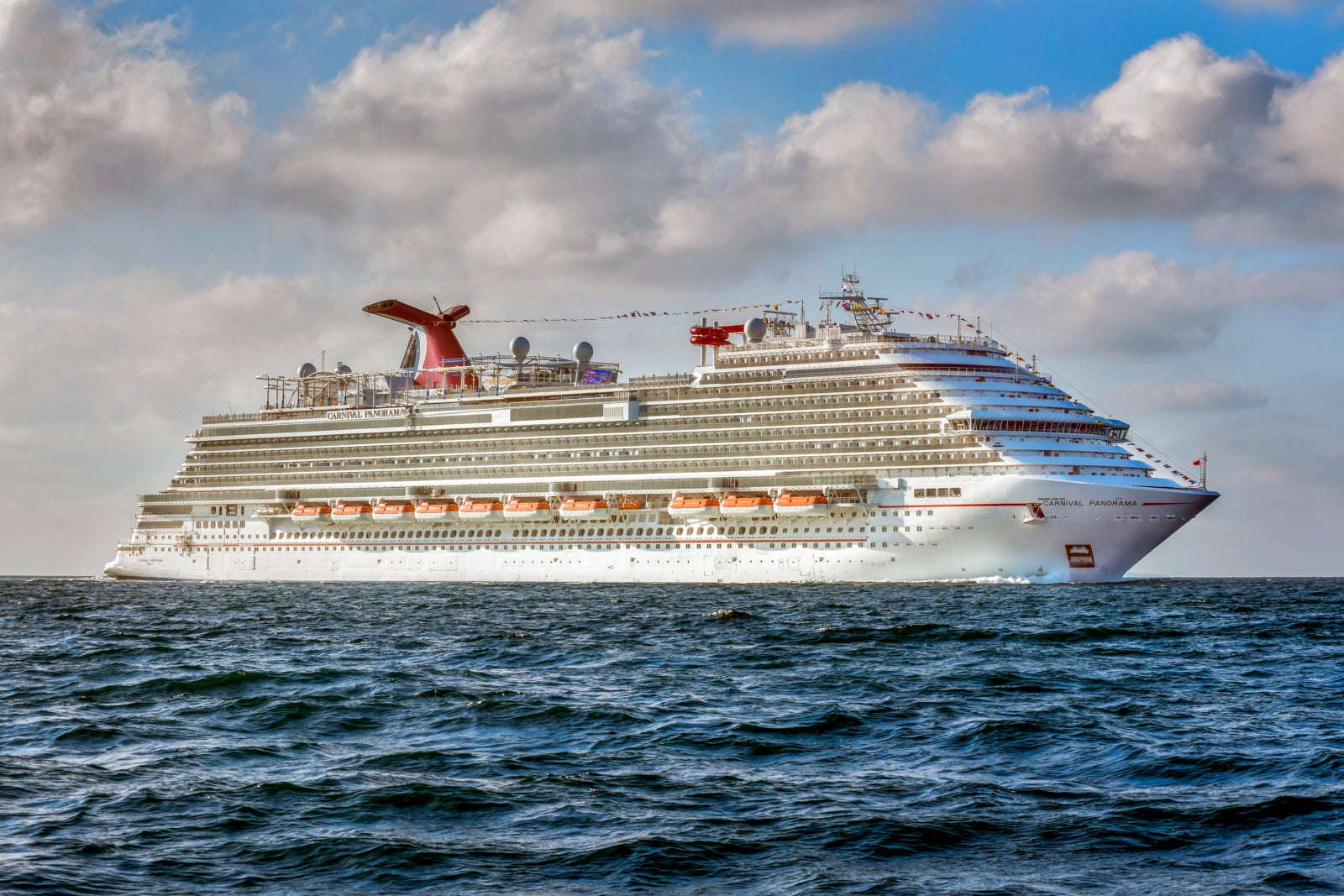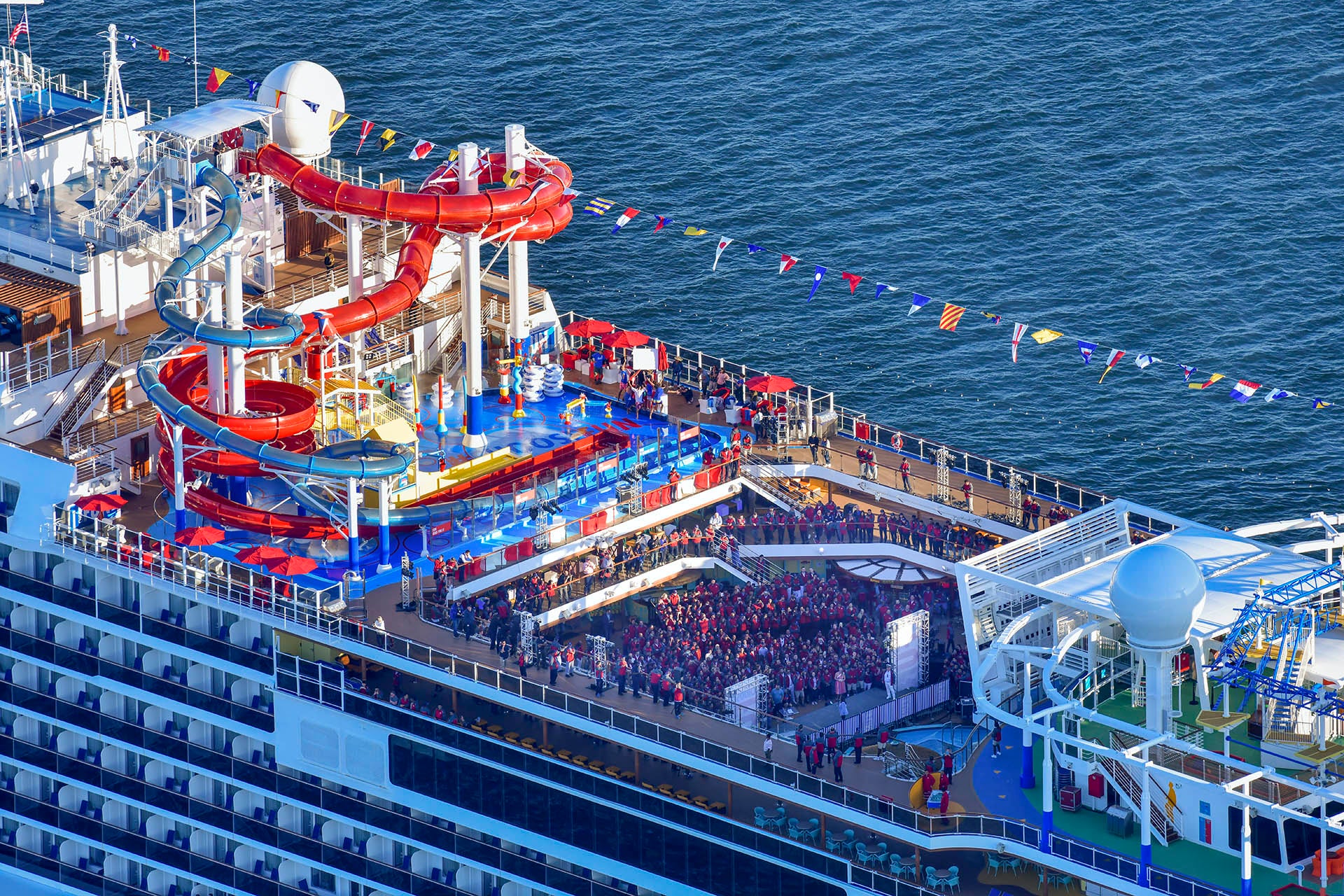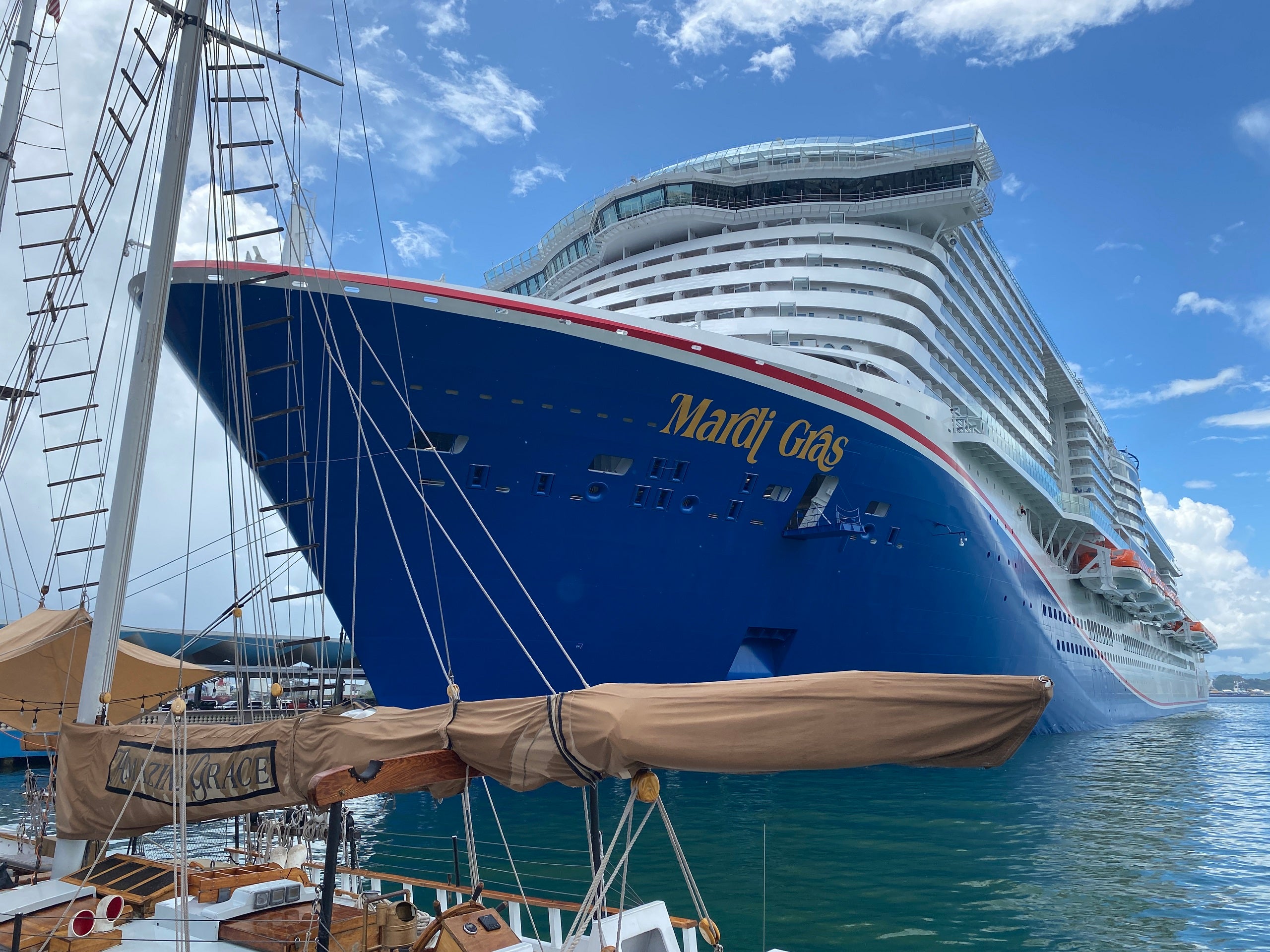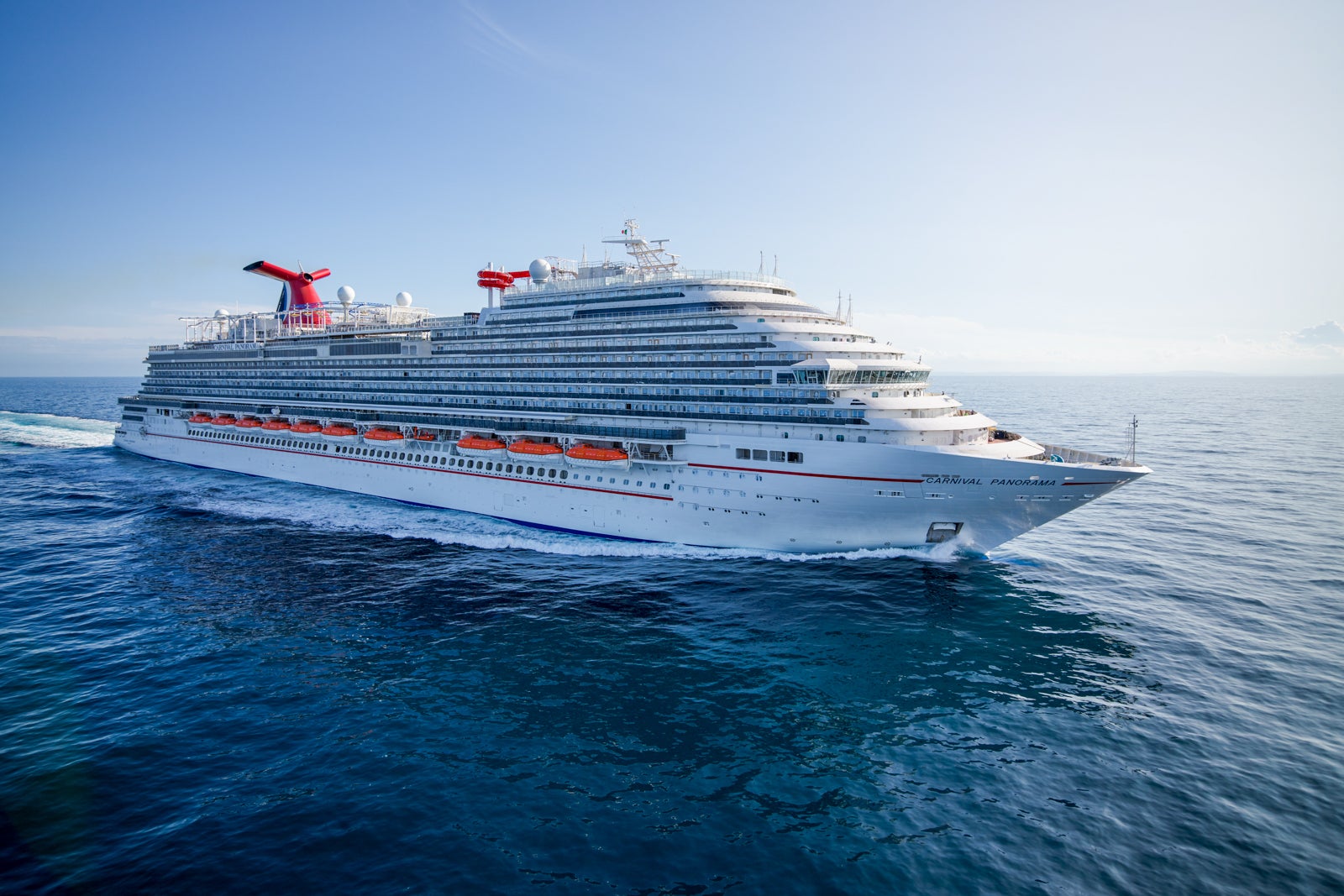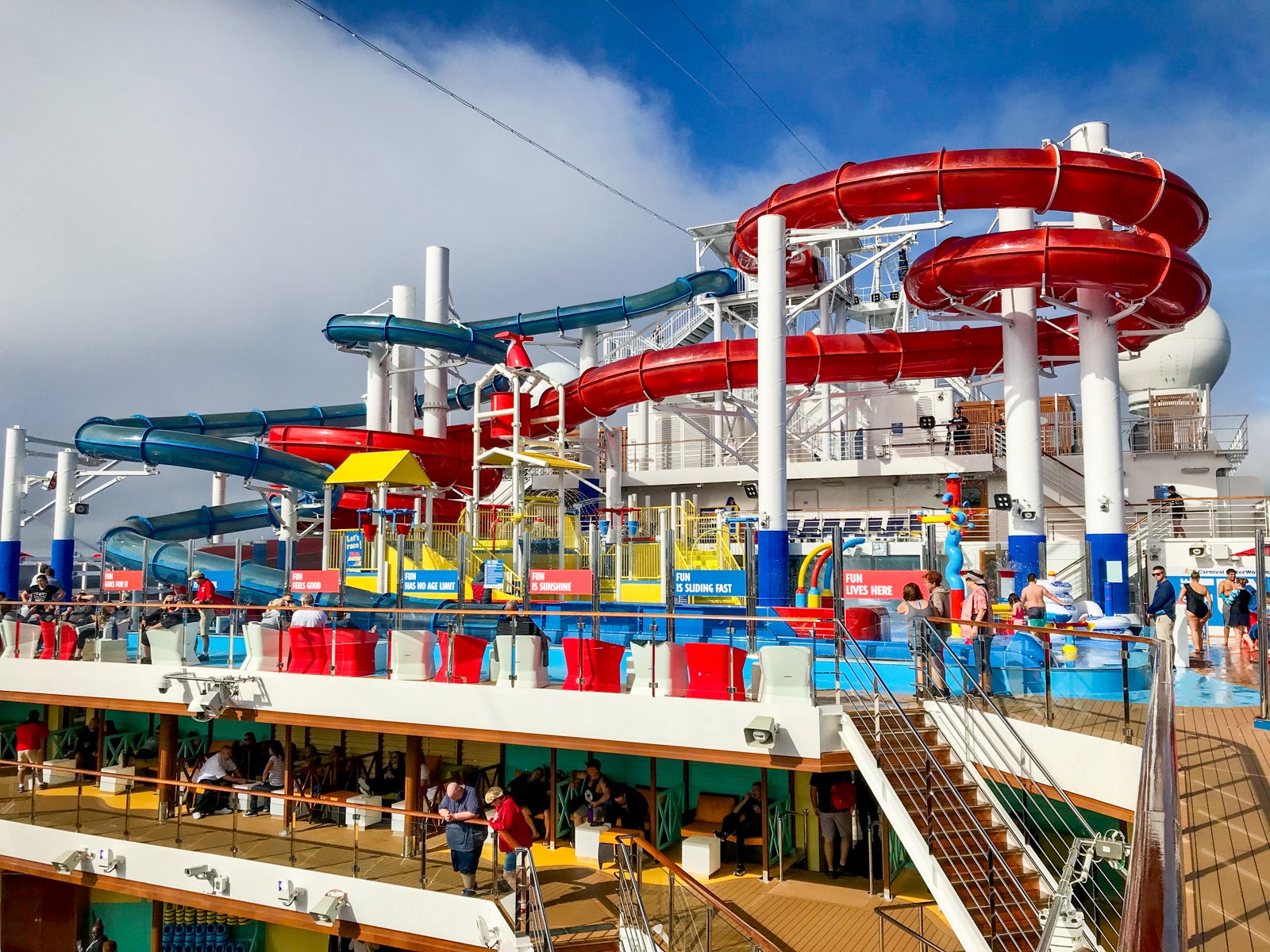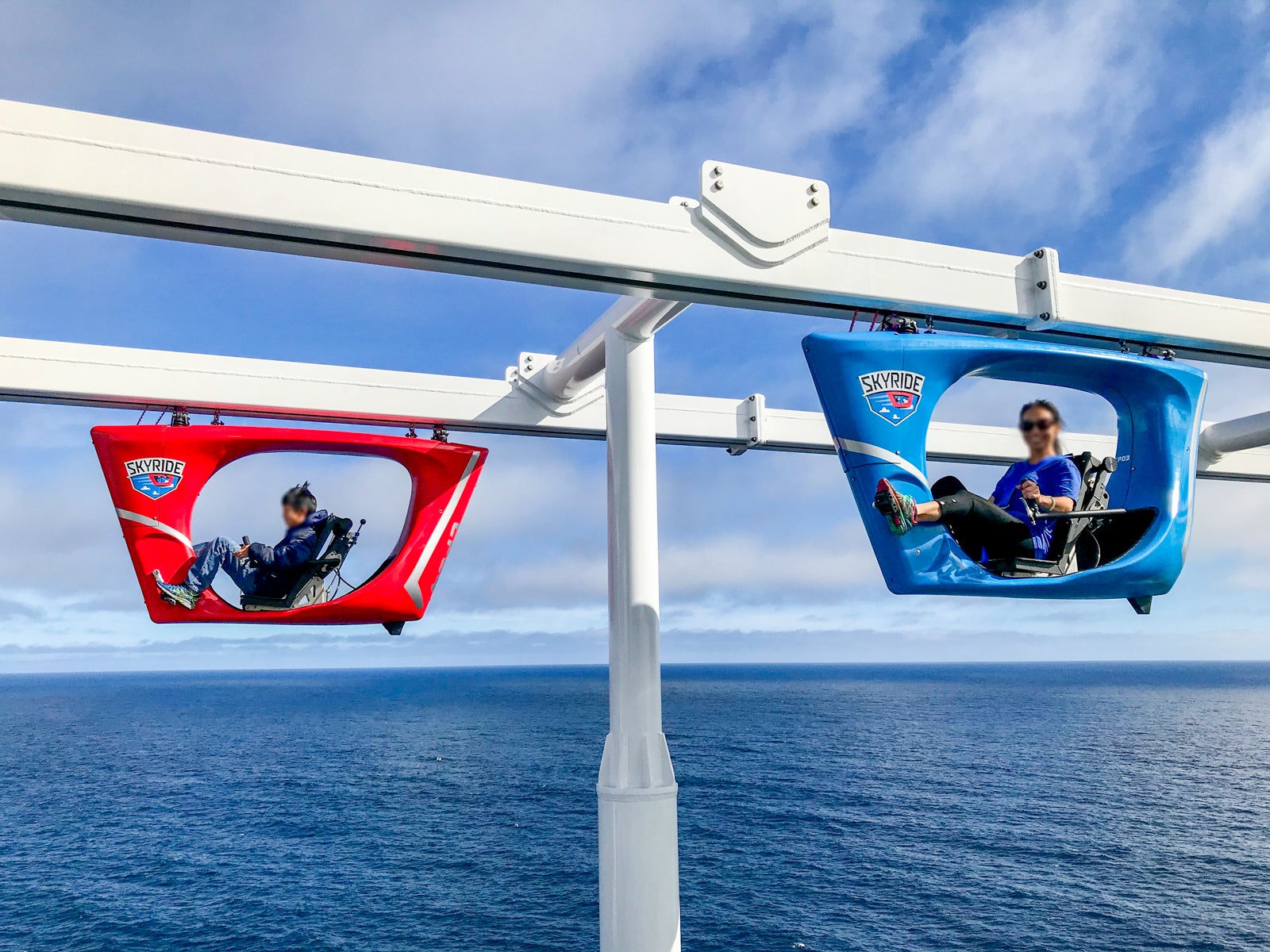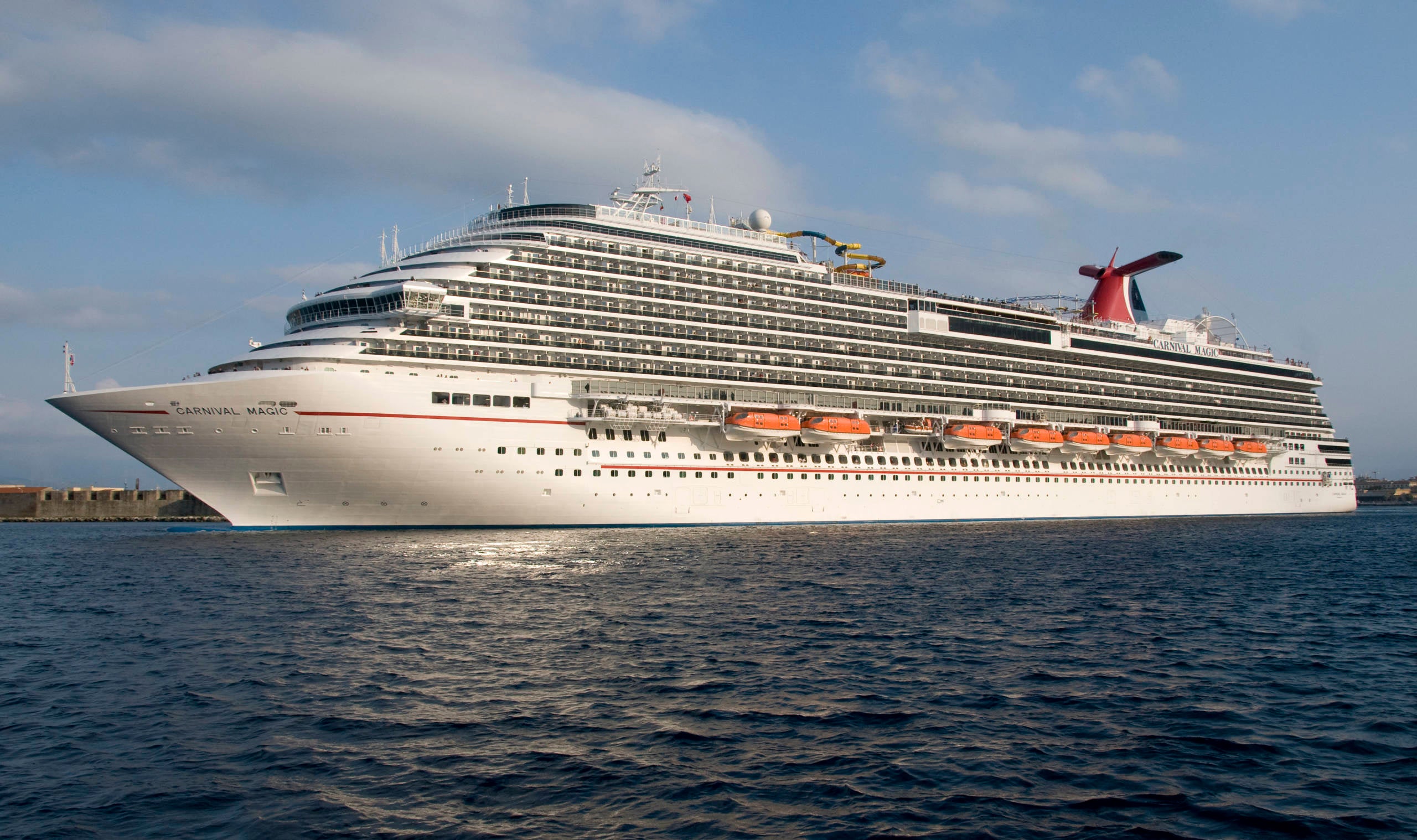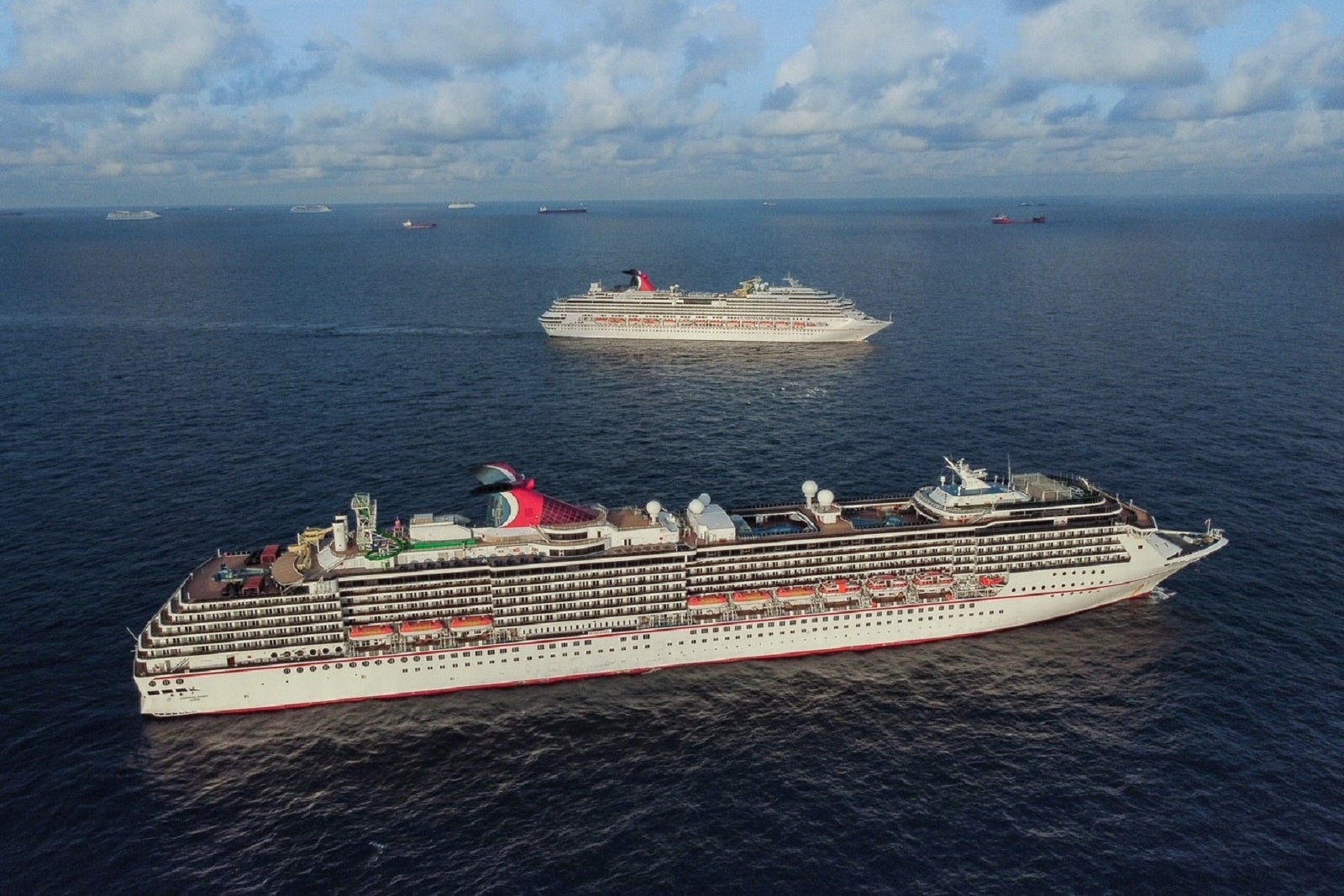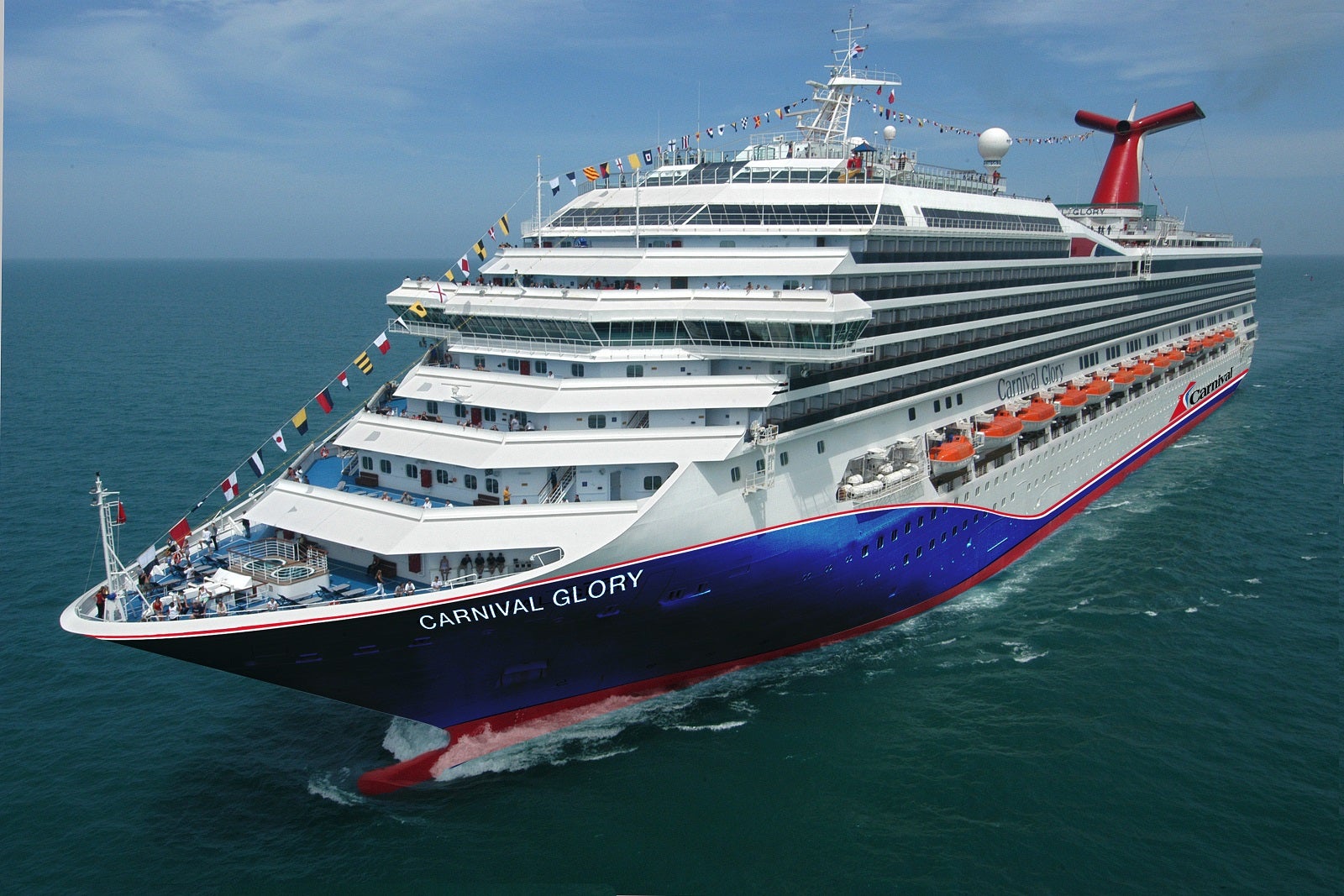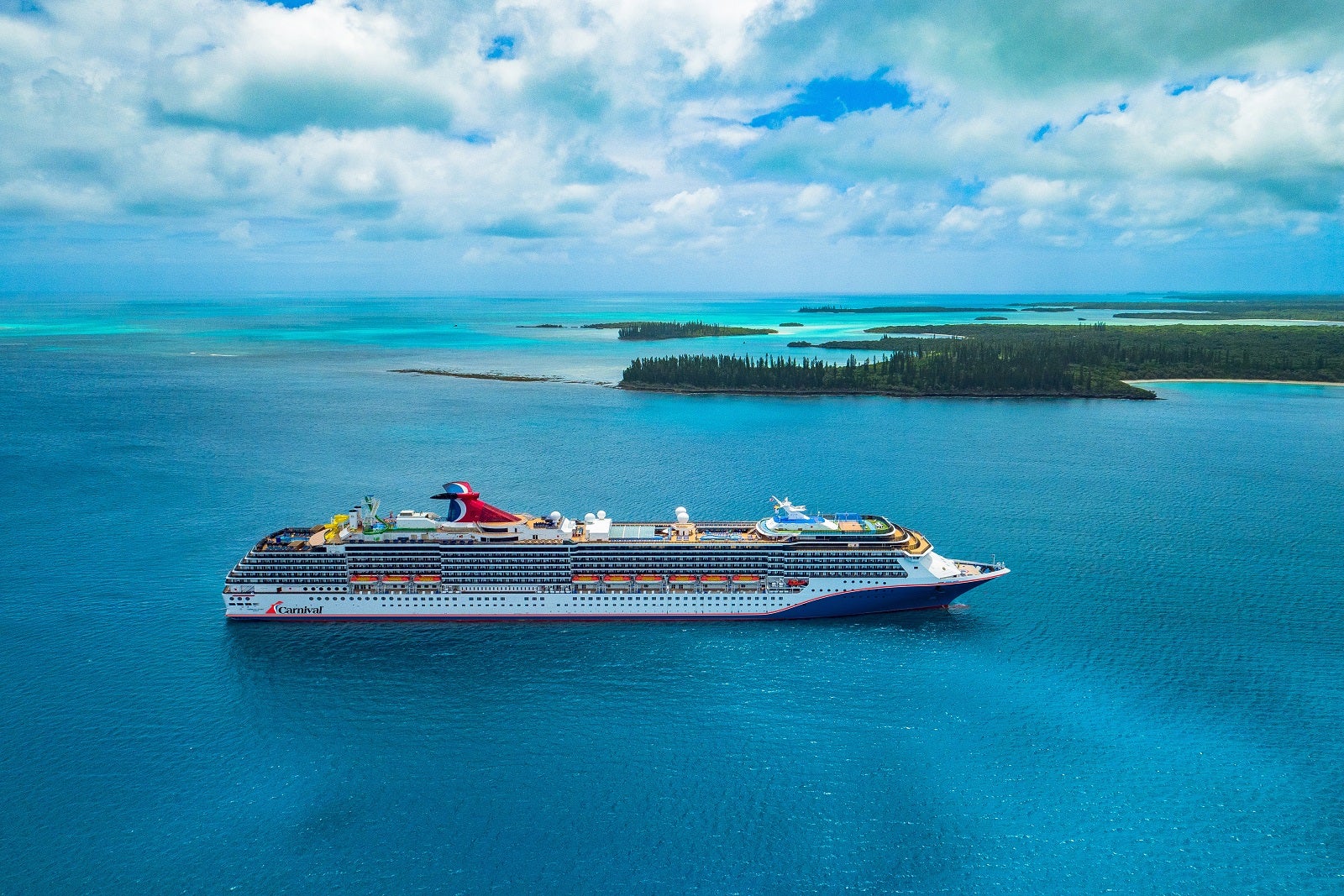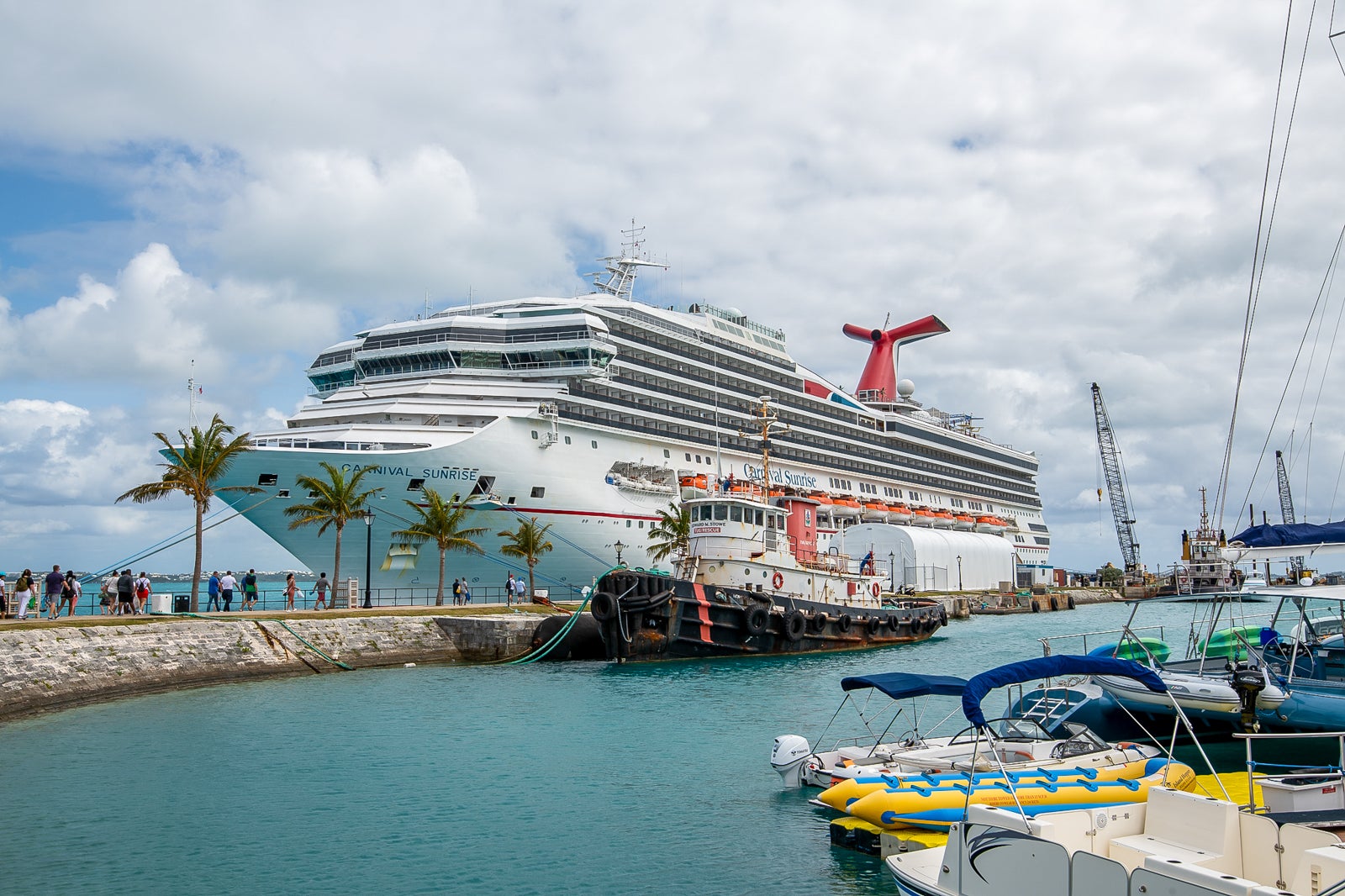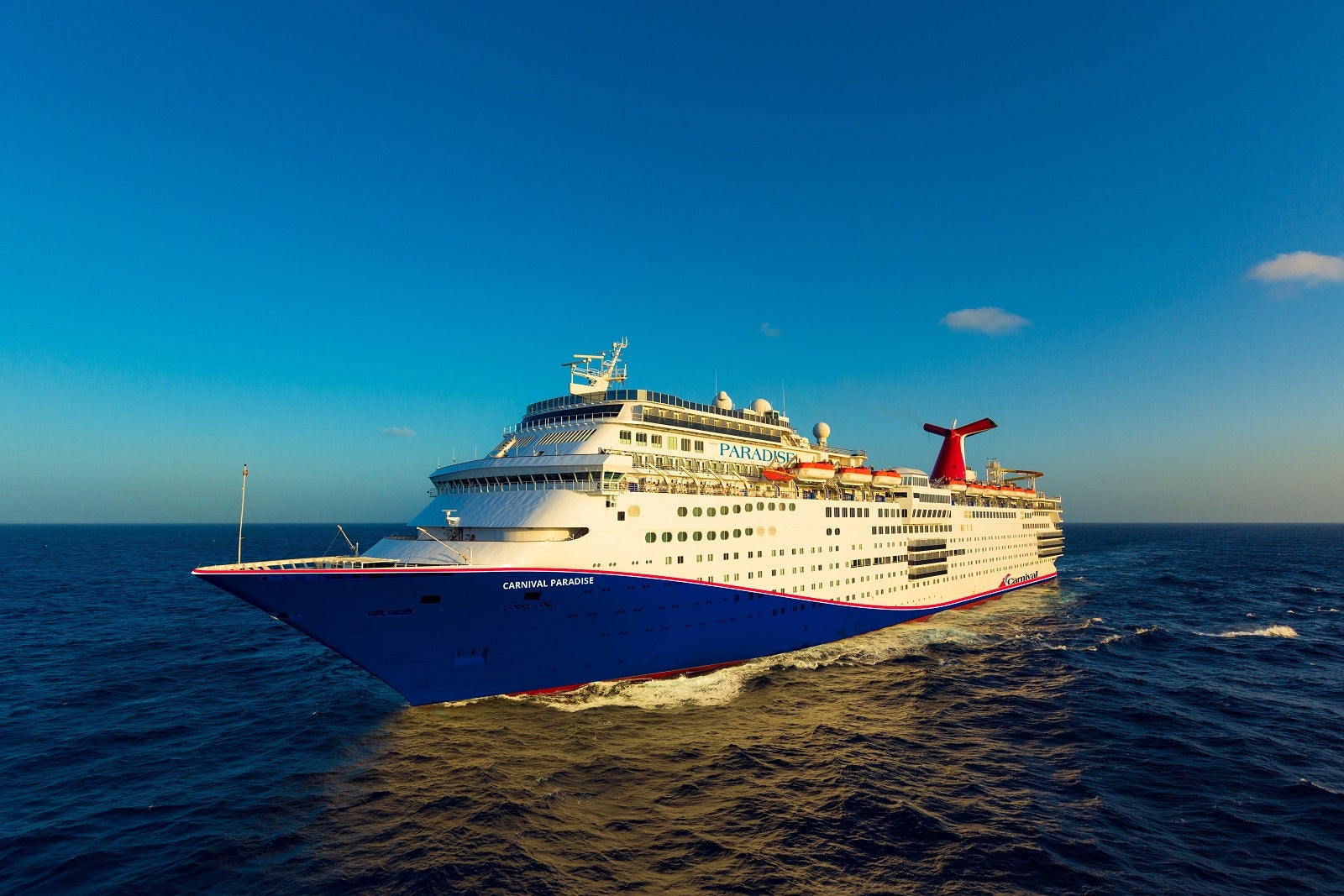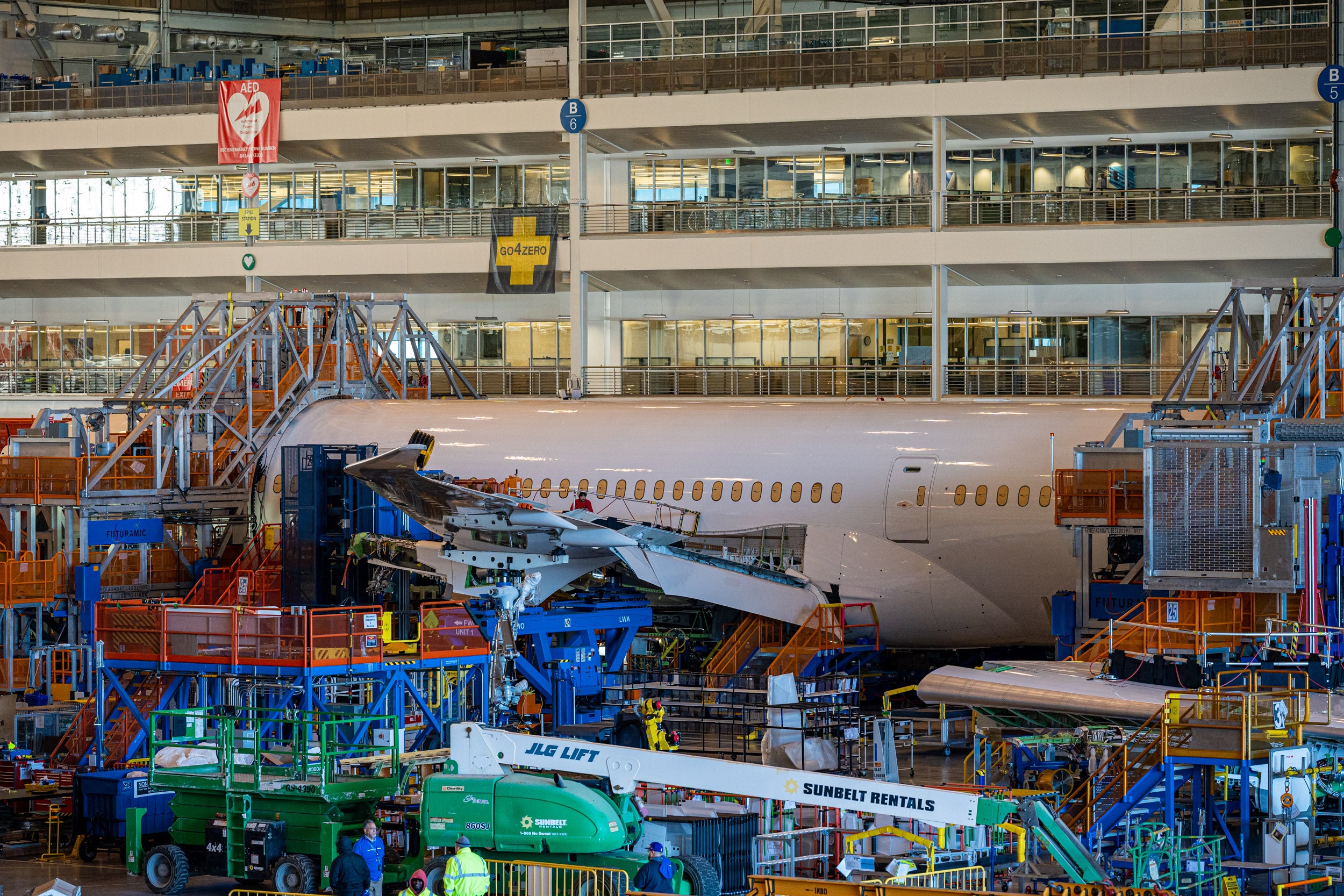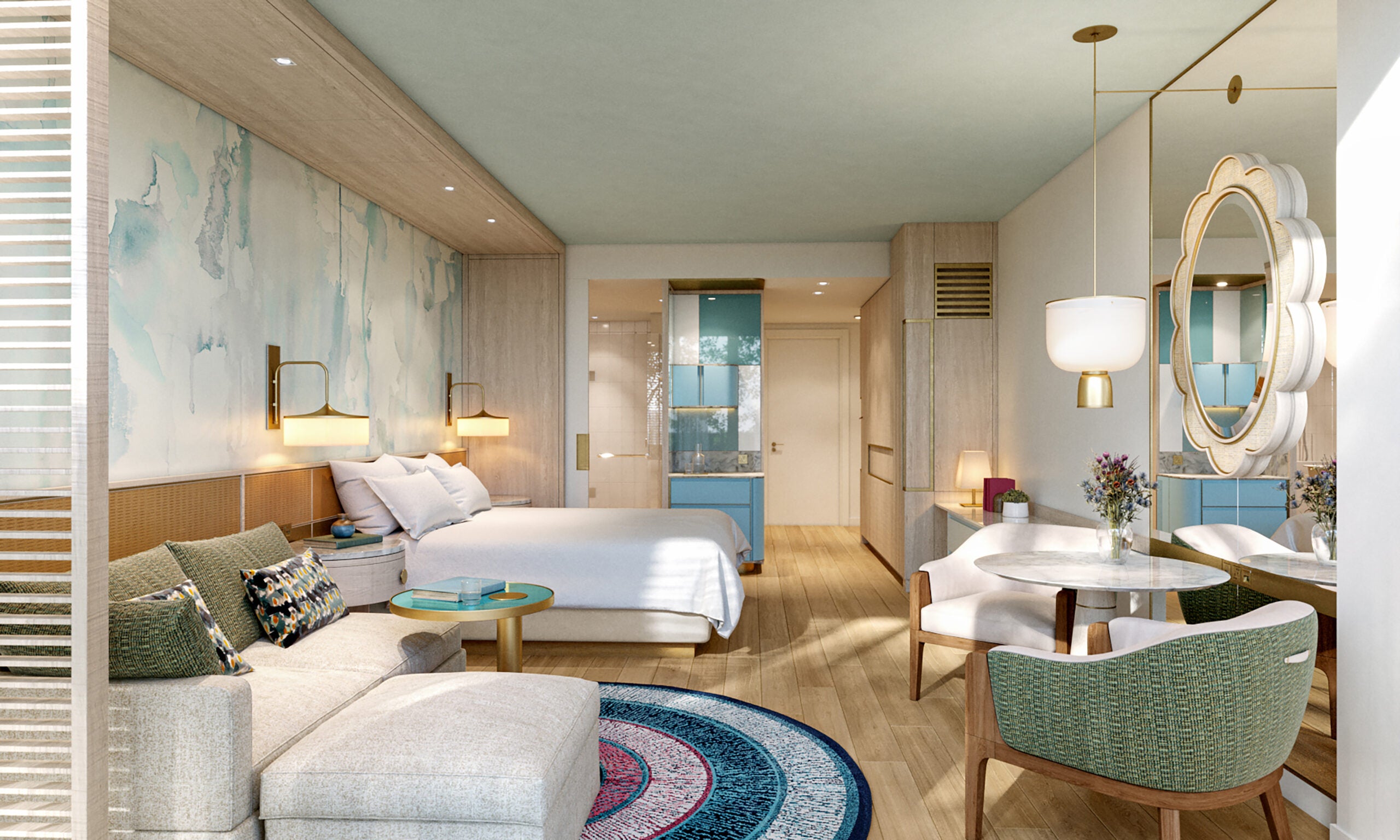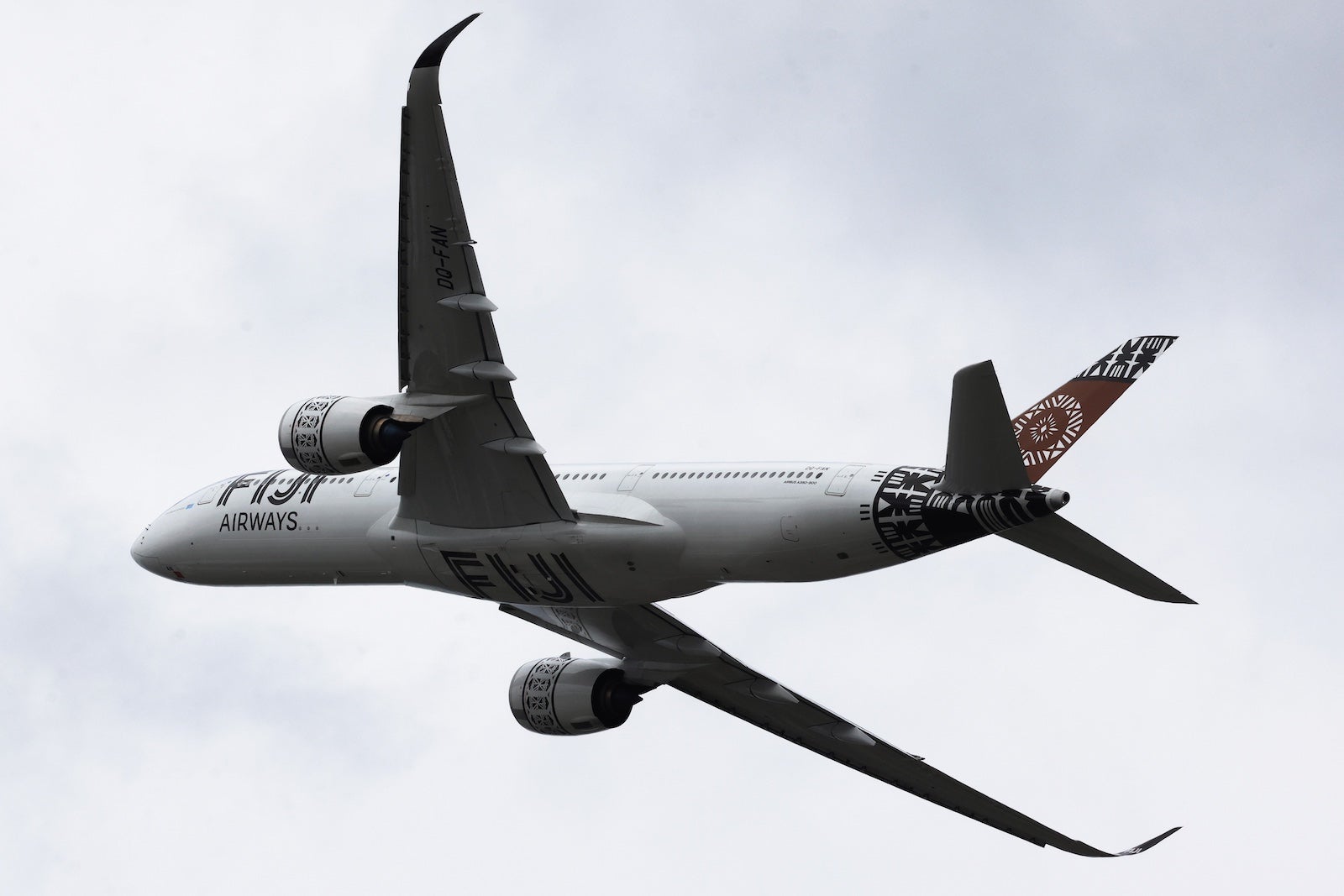The 8 classes of Carnival Cruise Line ships, explained
Thinking about a cruise on a Carnival Cruise Line ship? You have a lot of options.
The world’s second-largest cruise line by passenger capacity has 27 vessels in service. That’s more ships than any other major cruise brand except Royal Caribbean, which has 28 vessels in service.
In general, Carnival ships are large, but, with a few exceptions, they’re not giants by today’s standards.
Over the past three years, Carnival has begun operating its first three truly giant ships in years: Mardi Gras, Carnival Celebration and Carnival Jubilee. Each measures around 180,000 gross tons, putting them among the 20 biggest cruise vessels in the world.
But other than these three ships, Carnival’s biggest vessel is the 4,090-passenger Carnival Venezia, which measures just 135,225 tons. That makes it the 68th biggest cruise ship in the world. Many of Carnival’s 24 other ships don’t even crack the Top 100.
For more cruise guides, news and tips, sign up for TPG’s cruise newsletter.
This is a notable change for the brand from just a couple of decades ago. There was a time when Carnival operated some of the biggest cruise ships in the world. However, for many years, it held back from following rivals such as Royal Caribbean and MSC Cruises in building ever-bigger ships.
The arrival of Mardi Gras, Carnival Celebration and Carnival Jubilee has marked a major turning point for the line. It now seems committed to building the same sort of massive vessels that have become a hallmark of Royal Caribbean, its biggest rival.
Just this year, Carnival unveiled plans for three even bigger vessels that will be among the biggest ships in the world.

Daily Newsletter
Reward your inbox with the TPG Daily newsletter
Join over 700,000 readers for breaking news, in-depth guides and exclusive deals from TPG’s experts
Related: A beginners guide to picking a cruise line
The good news for those of you trying to get a handle on all the options within the Carnival fleet is that the line’s ships can easily be bunched into just eight groups of vessels that have similar amenities. If you know one member of the group, you know them all.
Each of these groups — known as “classes” in cruise industry lingo — is made up of ships that were constructed around the same time with the same basic design.
An introduction to Carnival Cruise Line ships
As mentioned above, Carnival’s ships can be divided into eight distinct classes. But even from class to class, there are a lot of similarities within the Carnival fleet.
Unlike Royal Caribbean and some other cruise lines, Carnival doesn’t always drastically change the design of its ships from class to class.
Related: The ultimate guide to Carnival Cruise Line ships and itineraries
Instead, Carnival usually takes an incremental approach to design changes for its new classes of ships. You’ll find a lot in common between the Vista class and Dream class, for instance, and these two classes aren’t all that different in feel from the earlier Splendor and Conquest classes of ships, though they are a bit bigger.
That said, Carnival is in the midst of a major change in its philosophy on ship design. Its new Excel-class vessels — which first debuted in 2021 with the arrival of Mardi Gras — are far bigger than its earlier ships. These ships also have a lot of new features and amenities (including the first-ever roller coasters on a cruise ship — and, no, we’re not making that up).
Related: The 4 new giants of the cruise ship world — and how you can book them
For many years, Carnival steered clear of the big ship trends in the industry. Executives thought the ever-bigger vessels being deployed by such lines as Royal Caribbean and MSC Cruises were too big to make for an enjoyable cruise experience.
Now Carnival is switching gears — no doubt because the giant ships unveiled by some other lines have been enormously popular with cruisers.
At Carnival, as at other lines, the biggest ships in the fleet have more amenities, eateries, lounges, bars and deck-top attractions than the smaller ships. This can be a huge plus for travelers who like to have a lot of options when vacationing.
However, Carnival’s biggest ships also sail with more passengers, which can be a turnoff if you’re the kind of traveler who likes a more intimate experience.
In general, Carnival’s biggest and most amenity-packed ships are its newest ships. If you’re looking for a cruise experience with the most possible onboard activities and venues, you’ll want to steer toward the vessels in Carnival’s new Excel class and its relatively young Vista and Dream classes.
If cruising in a more intimate environment is your preference, you’ll want to look at some of Carnival’s older classes of ships, including the Spirit and Fantasy classes.
The Carnival fleet is scheduled to grow by two more vessels over the coming year as it absorbs two ships from P&O Cruises Australia. The latter line, which is owned by the same parent company, is shutting down in early 2025.
As noted above, the line also has ordered three giant new vessels. They’re scheduled to debut between 2029 and 2033.
In addition, Carnival has ordered two additional ships in its recently unveiled Excel Class series that are scheduled to begin sailing in 2027 and 2028, respectively.
Excel class
Ships in class: Mardi Gras (2020), Carnival Celebration (2022), Carnival Jubilee ( 2023)
Size: 181,808 to 183,521 tons
If you’re in the “bigger is better” camp when it comes to cruise ships, this is the Carnival class for you.
At a bit over 180,000 tons, Carnival’s three new Excel-class vessels are 35% bigger than the line’s next-biggest ships and offer more eateries, lounges, bars and deck-top attractions than any other ships in the Carnival fleet by far.
Designed to take Carnival’s “fun ship” shtick to a new level, the ships are so big that, as noted above, they have room for roller coasters on their top decks — a cruise industry first. They also have a far broader array of suites than earlier Carnival vessels.
Among the new dining venues on the ships are the first Emeril Lagasse restaurant at sea, as well as the first Big Chicken eatery at sea. (Big Chicken is a chain created by basketball legend Shaquille O’Neal, who also serves as a Carnival spokesperson.)
Related: The 5 best destinations you can visit on a Carnival cruise
In addition to featuring a roller coaster, Mardi Gras was the first ship from a North America-based line designed to operate on liquefied natural gas. The fuel is touted as being cleaner than traditional ship fuel.
One caveat to keep in mind if you’re thinking of booking an Excel-class ship: They sail with a very large number of people. If being around crowds bothers you, these may not be the ships for you. The vessels are designed to hold a whopping 5,282 passengers at double occupancy. With every pullout sofa and pull-down bunk filled, they can hold up to 6,630 passengers.
Vista/Venezia class
Ships in class: Carnival Panorama (2019), Carnival Horizon (2018), Carnival Vista (2016), Carnival Venezia (2023) and Carnival Firenze (2024)
Size: 133,596 to 135,225 tons
With the arrival of the Excel Class ships starting in 2021, the Vista-class and Venezia-class ships (so similar that we have combined them into one entry) are no longer the biggest and most amenity-packed ships in the Carnival fleet. Still, they offer a lot of options when it comes to eateries, bars, lounges and deck-top attractions — more than you’ll find on most other Carnival vessels.
All four vessels in the Vista and Venezia classes have water parks with waterslides on their top decks, as well as miniature golf courses, ropes courses and multiple pool areas. They’re also known for their pedal-powered, suspended-in-the-air SkyRide attractions.
Carnival Vista and Carnival Horizon (officially Vista-class ships) also have IMAX theaters — the first in the cruise industry. Carnival Panorama, also a Vista-class ship, instead has the first trampoline park ever put on a cruise ship in partnership with Sky Zone.
There’s also a smorgasbord of restaurants, bars and lounges on all vessels. Among the many offerings on these ships are Carnival’s first breweries at sea (on all the vessels except Carnival Venezia and Carnival Firenze, which are officially known as Venezia-class ships and have a few notable differences).
On Carnival Panorama and Carnival Horizon, Guy’s Pig & Anchor Smokehouse | Brewhouse offers beer brewed on-site along with barbecue dishes designed by the Food Network’s Guy Fieri. On Carnival Vista, there’s a stand-alone brewery and a separate barbecue venue.
Other eateries on the ships include casual, Guy Fieri-designed Guy’s Burger Joint, Chipotle-like burrito spot BlueIguana Cantina (on Carnival Venezia, this is called Tomodoro and also serves a few Italian items), sushi outlets and steakhouses. Carnival Vista, Carnival Horizon and Carnival Panorama also feature Italian eatery Cucina Del Capitano, as well as JiJi Asian Kitchen, while Carnival Venezia has an Italian restaurant called Il Viaggio.
Carnival Horizon, Carnival Panorama, Carnival Venezia and Carnival Firenze also have teppanyaki restaurants, and all five ships have dedicated chef’s tables within their galleys.
Related: Everything you want to know about cabins and suites on Carnival Cruise Line ships
Both the Vista-class and Venezia-class ships were built on the same basic design platform and are roughly the same size with similar layouts. But Carnival Venezia and Carnival Firenze were originally built for Carnival’s Italy-based sister brand, Costa Cruises. As a result, they have a much stronger Italy theme and a few design differences. Still, enough is the same that for all practical purposes, they are Vista-class ships in all but name. Hence, we are combining the two classes into one listing.
Related: Carnival Venezia cruise ship review: What to expect on board
The Vista-class ships were, notably, the first ships in the Carnival fleet to boast exclusive, keycard-restricted cabin areas — a growing trend on many mass-market lines. There are two such areas on the three Vista-class ships: Havana Cabanas and Family Harbor, the latter of which is specifically geared toward families. Carnival Venezia and Carnival Firenze have keycard-restricted areas with different names.
The water park area on Carnival Horizon is particularly alluring if you’re a Dr. Seuss fan. It is unique among the water parks in the Carnival fleet and has a Dr. Seuss theme. The water park area on Carnival Venezia is also notable as it has one more waterslide than the water parks on the Vista-class ships.
All of these ships hold about 4,000 passengers each, based on double occupancy.
Dream class
Ships in class: Carnival Breeze (2012), Carnival Magic (2011) and Carnival Dream (2009)
Size: 130,000 tons
Carnival’s Dream-class ships are roughly the same size as its Vista-class ships, and they have much in common. Still, there are a few key differences.
For starters, the Dream-class ships don’t have IMAX theaters or trampoline parks. Those were both innovations that debuted with the Vista-class ships. They also lack exclusive, keycard-restricted cabin areas and some of the eateries found on Vista-class ships.
Still, for the most part, if you’ve been on a Vista-class ship, you’ll immediately feel at home on a Dream-class ship.
Related: Carnival Cruise Line’s VIFP Club loyalty program: Everything you need to know
Dream-class ships share some of the same amenities as Vista-class ships. For instance, Carnival Dream and Carnival Magic both feature ropes courses on their top decks, while Carnival Breeze has a 4D “thrill theater.” These innovations first debuted on Dream-class ships.
Dream-class ships also offer water parks with waterslides on their top decks, miniature golf courses, sports courts for basketball and volleyball and multiple pools.
Interior venues on Dream-class ships include Punchliner comedy clubs, piano bars, casinos and showrooms for big production shows. The dining options are similar to what you’ll find on Vista-class ships; Guy’s Burger Joint, BlueIguana Cantina, steakhouses and the Italian eatery Cucina Del Capitano are included on all three vessels.
Two of the three ships — Carnival Breeze and Carnival Dream — also have sushi eateries, while Carnival Breeze and Carnival Magic have Carnival’s Caribbean-inspired watering hole, RedFrog Pub.
The ships in this class hold 3,646 to 3,690 passengers based on double occupancy.
Splendor class
Ships in class: Carnival Splendor (2008)
Size: 113,300 tons
Carnival Splendor is an outlier in the Carnival fleet — a ship that makes up a class all its own. That said, it has a lot in common with the ships of Carnival’s Conquest-class ships (see below).
Originally designed and ordered for Italy-based Costa Cruises — a sister brand to Carnival — the ship is actually a sister vessel to Costa’s four Concordia-class ships. It will be familiar to anyone who knows Carnival ships because the design of Costa’s Concordia class was based upon the design of Carnival’s Conquest class, and the two classes are very similar.
The main difference between Carnival Splendor and its Conquest-class cousins is that the former has an enlarged and redesigned top deck area. The structure around the ship’s main pool is noticeably different, with a retractable, sliding glass roof that you won’t find on the Conquest-class ships, as well as a water play area for kids. The ship also has a bigger spa area.
Other than that, though, Carnival Splendor is basically a variation of the Conquest-class ships. Size-wise, it’s just a few thousand tons bigger. It holds 3,012 passengers, based on double occupancy.
Conquest class
Ships in class: Carnival Freedom (2007), Carnival Liberty (2005), Carnival Valor (2004), Carnival Glory (2003) and Carnival Conquest (2002)
Size: 110,000 tons
At 111,000 tons, the Conquest-class ships (and Carnival Splendor, noted above) are about 20% smaller than the newer Vista-class and Dream-class ships. As a result, they have somewhat fewer amenities.
Still, you’ll find a lot of the classic Carnival “fun ship” attractions on these vessels, including water play areas with waterslides, miniature golf courses and adults-only Serenity deck-top retreat areas.
You’ll also find a solid array of eateries on each ship, including a Guy’s Burger Joint, BlueIguana Cantina burrito outlets and steakhouses.
In addition to being smaller than Vista-class and Dream-class ships, Conquest-class ships also sail with fewer passengers. All Conquest-class vessels hold just shy of 3,000 passengers at double occupancy — about 1,000 fewer passengers than the Vista-class ships.
That’s a noticeable difference if you’re the kind of vacationer who doesn’t like to be around giant crowds. For some Carnival fans, the smaller size of the Conquest and Splendor classes makes these ships appealing. Others prefer the added amenities that come with the bigger ships.
Spirit class
Ships in class: Carnival Miracle (2004), Carnival Legend (2002), Carnival Pride (2002), Carnival Spirit (2001) and Carnival Luminosa (2009)
Size: 88,500 tons
Carnival Spirit-class ships are the adventurers of the Carnival fleet.
The vessels are built for “all-weather” cruising, with pools that can be covered by retractable domes when it’s cold and stormy. These ships sail in places such as Alaska, where even in the summer, it can be too chilly for sunning on an open pool deck.
These are also the ships that Carnival uses for winter sailings to the Caribbean from Baltimore, which can involve a day or two of cold and stormy sailing in the Atlantic.
In some recent years, Carnival has also deployed one of its Spirit-class ships across the Pacific to Australia — the most far-flung destination that it offers on its schedule.
In addition to having a weatherproof main pool area, the Spirit-class ships are great for far-flung destinations because of their relatively small size, which allows them to access smaller ports. At just 88,500 tons, they’re among the smallest ships in the Carnival fleet — less than half the size of Carnival’s new Excel-class vessels.
The Spirit-class ships are notably lower and sleeker than most other vessels in the Carnival fleet. Passing under relatively small bridges is not a problem for them. Unlike a lot of recently built cruise vessels, they are also thin enough in the middle that they can squeeze through the old locks of the Panama Canal.
The Spirit-class vessels also boast the largest percentage of balcony cabins and oceanview cabins in the Carnival fleet, which makes them perfect for a destination such as Alaska where being able to watch the scenery from your cabin is a big plus.
They’re also relatively intimate ships, holding just 2,124 passengers at double occupancy — by modern-day cruise ship standards, that makes them “mid-size” vessels.
Still, you can expect many of the same fun-focused features on Spirit-class ships that you’ll find on the line’s bigger vessels, including water parks with waterslides and miniature golf courses.
Spirit-class ships also have one of the most interesting features in the cruising industry — special date-night restaurants that are incorporated into their funnels and feature translucent glass-dome ceilings.
Note that one of the Spirit-class ships, Carnival Luminosa, was originally built for Costa Cruises, a sister line to Carnival (it first sailed under the name Costa Luminosa). The vessel was built to the same basic specifications as the four Spirit-class vessels constructed for Carnival in this class, although it is a tad bigger and can hold a few more passengers. It dates to 2009.
Sunshine class
Ships in class: Carnival Radiance (2000/2021), Carnival Sunrise (1999/2019) and Carnival Sunshine (1996/2013)
Size: 102,000 tons
The Sunshine class (once known as the Destiny class) may be the most unusual class of ships in the Carnival fleet. On paper, the ships in this class are among the oldest vessels that Carnival operates. However, you can also argue that they are among the newest vessels in the line.
This is because each ship in this series has been almost completely gutted and rebuilt from the waterline up.
The makeovers of the ships, which began in 2013, were so thorough that Carnival has given each of the vessels a new name. Carnival Sunshine is what old-time Carnival fans will remember as Carnival Destiny. Carnival Sunrise is the former Carnival Triumph. Carnival Radiance began life as Carnival Victory.
Carnival spent $200 million in 2019 overhauling Carnival Sunrise alone. In addition to sprucing up just about every space on the ship, the money was used to add classic Carnival attractions that the ship lacked. This included a full-blown water park, which replaced a single waterslide on one of its top decks.
Carnival Sunrise also received a SportSquare area on its top deck like the ones found on newer Carnival vessels. It has a ropes course, basketball court, miniature golf course, outdoor pool and ping-pong tables. Carnival didn’t end the deck-top changes there. It also found space for another signature Carnival offering that had been lacking: an adults-only Serenity outdoor lounge area with padded loungers, daybeds, a hot tub and a full bar.
In addition, Carnival Sunrise now has half a dozen new food and beverage venues, including a version of Carnival’s signature steakhouse, Fahrenheit 555; Carnival’s signature Italian eatery, Cucina Del Capitano; and a Bonsai Express sushi outlet.
Related: Everything You Need to Know About Carnival Cruise Line’s ‘New’ Sunrise Ship
The overhaul of Carnival Sunshine, which took place in 2013, brought similar changes, as well as a complete renovation of the ship’s pool area that incorporated a multideck waterfall.
Carnival Radiance, for its part, just emerged from its long-scheduled overhaul, which was delayed in late 2021 by the COVID-19 pandemic.
Note that even after the makeovers, the ships still don’t have all the bells and whistles of Carnival’s truly new ships, such as Carnival Panorama. As noted above, Carnival’s newest ships are bigger than its older ships, allowing for more attractions, restaurants and lounges.
At around 102,000 tons, the Sunshine-class ships are more than 20% smaller than Carnival Panorama and more than 40% smaller than Mardi Gras and Carnival Celebration.
The ships hold from 2,984 to 3,002 passengers, based on double occupancy.
Interestingly, these weren’t always considered smaller vessels. In fact, when the line first unveiled Carnival Sunshine in 1996 (back when it was called Carnival Destiny), it was the biggest cruise ship in the world and was the first to surpass 100,000 tons.
Now, it doesn’t even crack the list of the 50 biggest cruise vessels.
Fantasy class
Ships in class: Carnival Paradise (1998) and Carnival Elation (1998)
Size: 70,000 tons
Built in the 1990s, the Fantasy-class ships are Carnival’s oldest and smallest ships, and the line is in the process of phasing them out. Going into 2020, the line had eight of these vessels. It removed four of them from its fleet soon after the COVID-19 pandemic began, and this year, it removed two more — Carnival Sensation and Carnival Ecstasy.
The two Fantasy-class ships that are left are mostly used in secondary ports — such as Jacksonville, Florida, and Mobile, Alabama — that might not be able to support bigger vessels.
Related: Why I’m sad Carnival Cruise Line is retiring its smallest ship
While still much-beloved by Carnival fans, in part for their intimate size, these ships notably lack a large number of balcony cabins — the cabin type that everyone wants these days. Most of the cabins on these ships are ocean-view cabins that only offer a window or a porthole or windowless inside cabins.
That said, the two remaining Fantasy-class ships have undergone renovations over the years to add more balcony cabins. Depending on the ship, there were between 98 and 150 new balconies added, including new suites.
The ships have relatively fewer amenities and venues than the newer and bigger Carnival ships. You won’t find giant water parks on these vessels as you would on newer Carnival ships. However, you will find multiple slides and a spray park for the kids. The dining options are also limited.
Still, for a lot of Carnival fans, these are fun ships.
Two vessels each hold around 2,100 passengers, based on double occupancy.
Bottom line
Carnival has quite a few different classes of ships, but the differences between many of them aren’t as big as the differences between classes at other lines.
You’ll find a lot of consistency from ship to ship in the Carnival fleet in the type of venues that you find on board. In recent years, Carnival has spent $2 billion overhauling many of its ships to create that consistency in onboard venues and amenities.
Vacationers looking for a big resort experience with a lot of options should choose one of Carnival’s newest ships, which are bigger and have more amenities. If you’re looking for more intimacy on a cruise ship, some of the older classes of ships, such as those in the Spirit class, might be just right.
Planning a cruise? Start with these stories:

